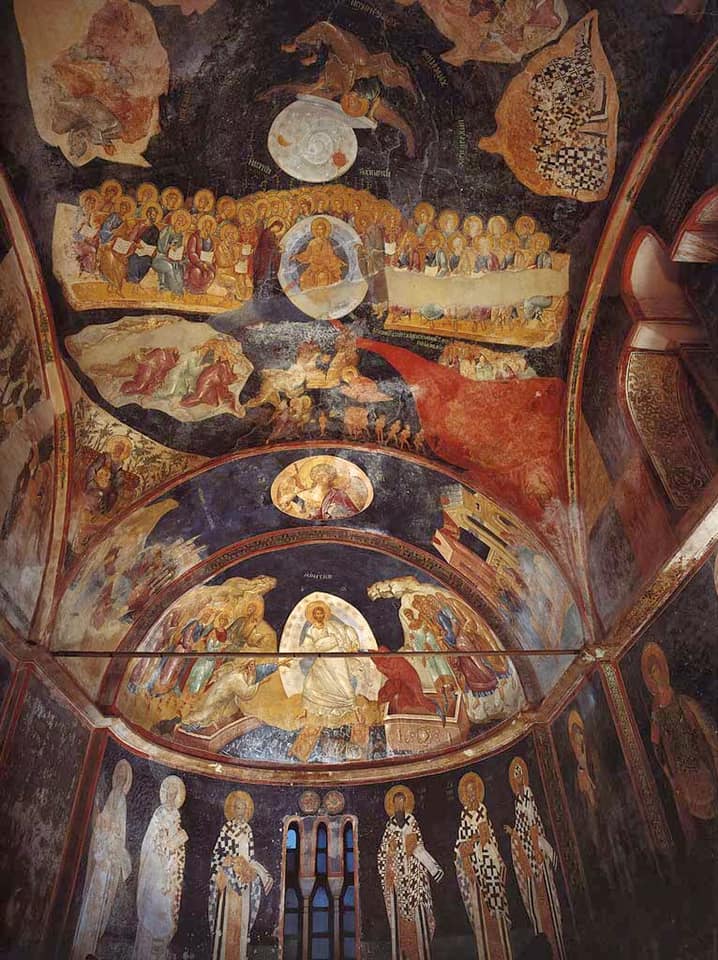The Chora Church in Constantinople (museum and from today a mosque) is the most important monument of the Palaeologan period and due to its unique iconographic program one, of the most important artistic creations of Byzantine art.
The katholikon of the Chora Church was built between 1077 and 1081 by Maria Dukaina, the mother-in-law of the emperor Alexios I Komnenos, above an older building. In 1120 it was radically repaired by Alexios’s son, Isaac Komnenos. Much later, between 1316 and 1321, Theodore Metochites, Logothete of the General during the reign of Andronikos II Palaiologos and scholar with important writing, renovated the building, added the exonarthex and the southern chapel and decorated them with mosaics and frescoes.
The southern parecclesion was annexed and decorated in 1315-20 at the expense of Metochites, in order to include the tomb of the owner. The iconographic program is in accordance with the intention of making the place a mortuary chapel. An imposing composition of the Descent of Christ into Hades decorates the arch, while a monumental representation of the “Second coming of Christ, the last judgment” covers the highest parts of the eastern part. The two representations from the Miracles of the Lord, the raising of the widow’s son and the daughter of Jairus, complete the program of the eastern part of the parecclesion, that in total expresses the Triumph of Christ over death. The decoration of the lower zone of the arch of the parecclesion also depicts the full-length Virgin Mary who pulls the Holy Infant with her hands towards her cheek and is characterized as “one of the most emotional types of Panagia Eleousa in Byzantine art.” Related to the great spread of the worship of the Theotokos are the depictions of the four melodist saints: John of Damascus, Cosmas the Hymnographer, Theophanes Graptos and Joseph the Hymnographer, who introduced the basic Orthodox Mariology in Byzantine hymnography. Remarkable in the series of scenes of the Old Testament is the representation of Jacob’s Ladder on the west side of the south wall. The western part is decorated with scenes from the Old Testament that are representations of Panagia, thus forming a hymn to the Theotokos through painting means.
Source: Metropolis of Zambia
